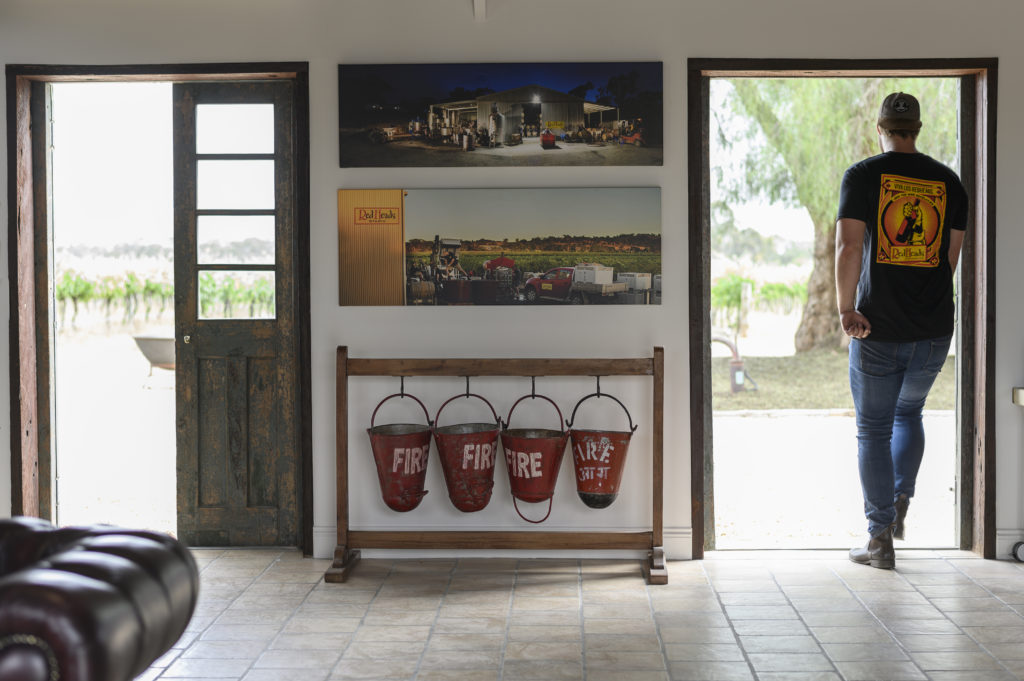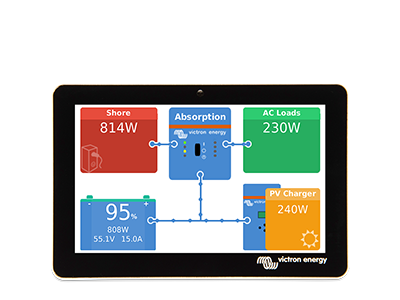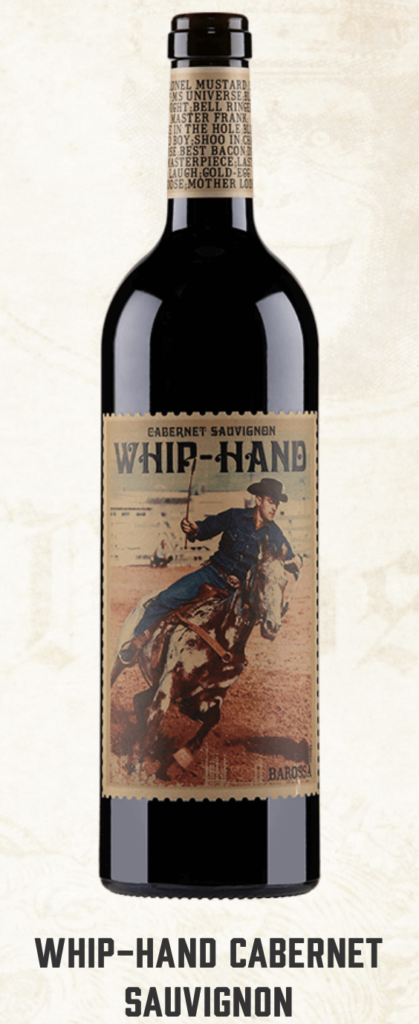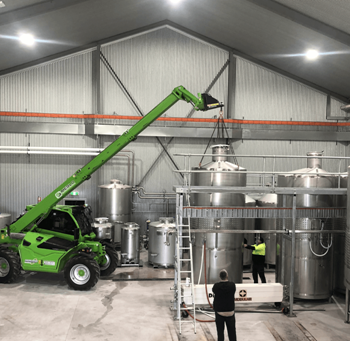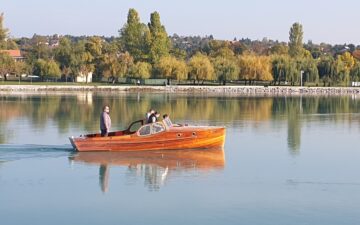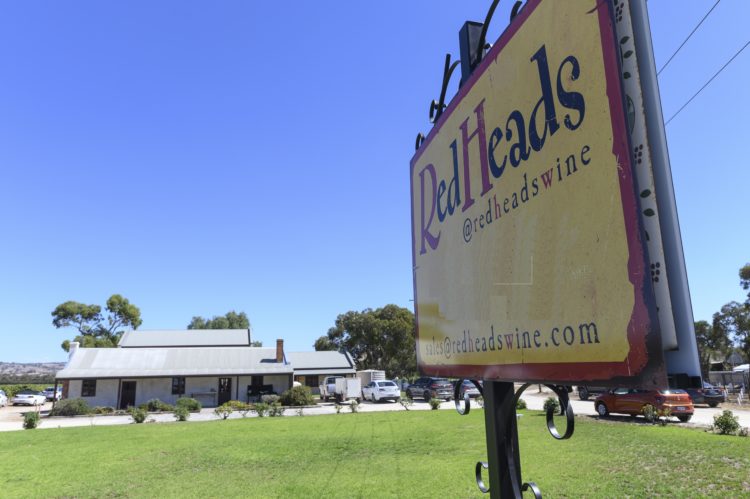
Talking to Alex Trescowthick, Chief Winemaker at
RedHeads Wine you soon realise he’s not afraid of cutting a new path.
Alex traces his open-mindedness about winemaking to a lecture he attended in 2016 by Roger Boulton – a Professor in Chemical Engineering. Professor Boulton’s research into fermentation has solved many old questions over the years, made some discoveries, and proposed new theories for the fermentation process, and achieving stability in the finished product. At the end of the chemistry-focussed lecture, the question most on Alex’s mind was: “Why isn’t everyone making wine in this way?”
So the offer back in 2017 to set up RedHeads Wine, owned by the well-known Laithwaite family of wine merchants, and located in the favoured Barossa Valley of South Australia (the Wine state); together with a licence to experiment and develop new methods and processes in the making of small-batch premium wines, couldn’t have come at a better time.
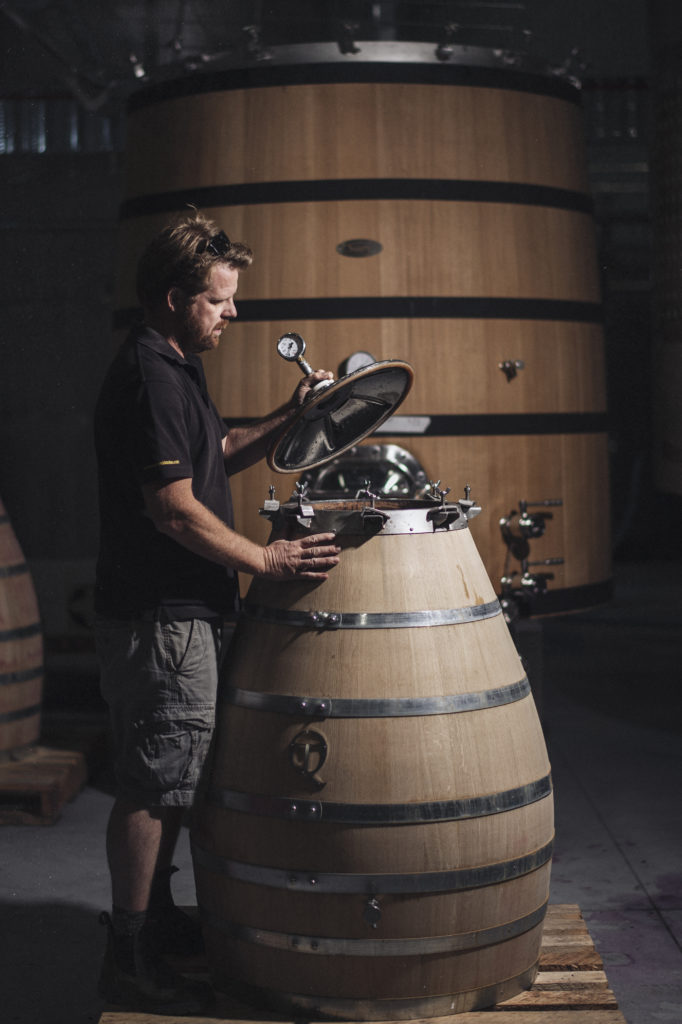
Alex Trescowthick, Winemaker
Grape Selection
In addition to producing wine from their own grapes, RedHeads select berries from other premium growers around South Australia – choosing their grapes row by row. From peachy Chardonnay to robust Graciano; From Barossa-abundant Shiraz to lesser known varieties like Touriga – RedHeads hunt out low-yielding grapes which will be perfect for the bottling they have in mind.
When RedHeads relocated their business in 2019, they realised they had an opportunity to build a winery which would be at the forefront of innovation in the wine industry.
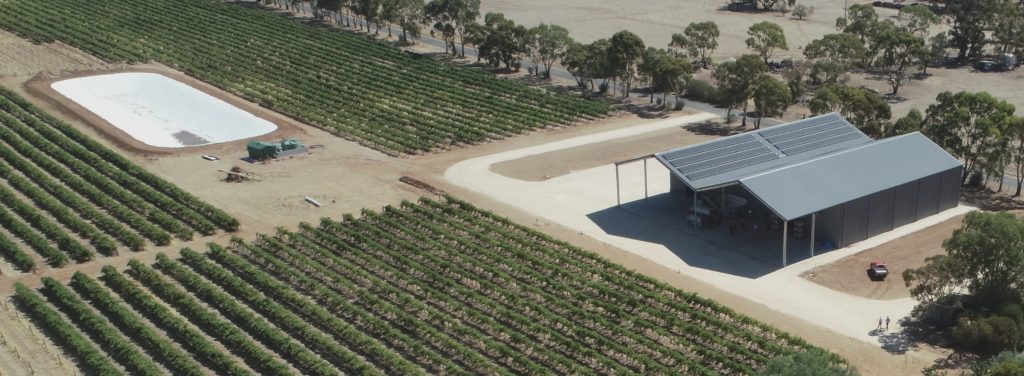
New Build plant and reservoir
Solar Energy
Early on, an application to upgrade the electricity grid to suit their needs resulted in a much higher quote than expected. A consultation with
MyEnergy Engineering whose electricians and engineers have over ten years of experience of energy harvest and storage for Commercial and Residential customers, demonstrated that for the same investment they could purchase their own solar energy installation
and eliminate their electricity bills. RedHeads Wine – who say they have ‘Green Heads’ when it come to decision making – liked the idea of solar powered winemaking, but wondered whether in practice, their installation would cover 50% or 75% …or more, of their requirement. Now that it’s all up-and-running they have their answer – 97% of their energy requirement is met by their solar installation.
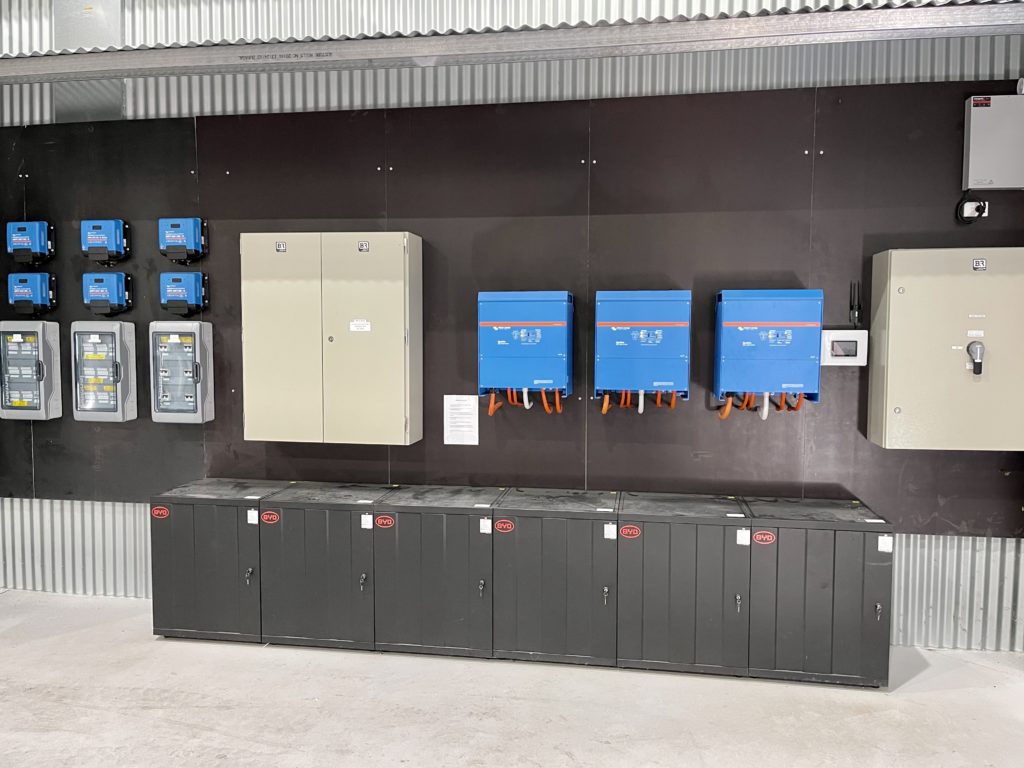
The Energy Storage System (ESS) at RedHeads Wine was designed by Ciaram Granger, Managing Director at MyEnergy, and comprises:
- 3 x Quattro 48/15000 Inverter/Chargers
- 80kWp Solar Array
- 6 x 250/100 SmartSolar Charge Controllers
- 7 x BYD Batteries totalling 96.6kWh storage
- 2 x Fronius Symo 15kW three phase inverter
- Cerbo GX communication device and:
- GX Touch 50 whole-system control is brought together by one simple touch-screen device
Energy Storage Systems are designed to maximise self-consumption and storage of energy generated by your own system – only reluctantly buying or selling energy to the grid.
Ciaram chose the new Cerbo GX for its dual core processing power. The Cerbo GX acts as the communication centre of the system keeping the power harvest, storage and supply harmonised across all devices – including third party manufacture products like the BYD battery bank, and the Fronius three-phase Solar inverters.
The neat touch-screen
GX Touch 50, offers at-a-glance system status information. User-interface couldn’t really be much simpler. There are other ways to communicate with the installation, too: Alex likes the fact that he can monitor the power plant on his smart phone using
VictronConnect; and
MyEnergy like the fact that they can monitor the site remotely using the Victron Remote Management (
VRM) platform – without even leaving the office.
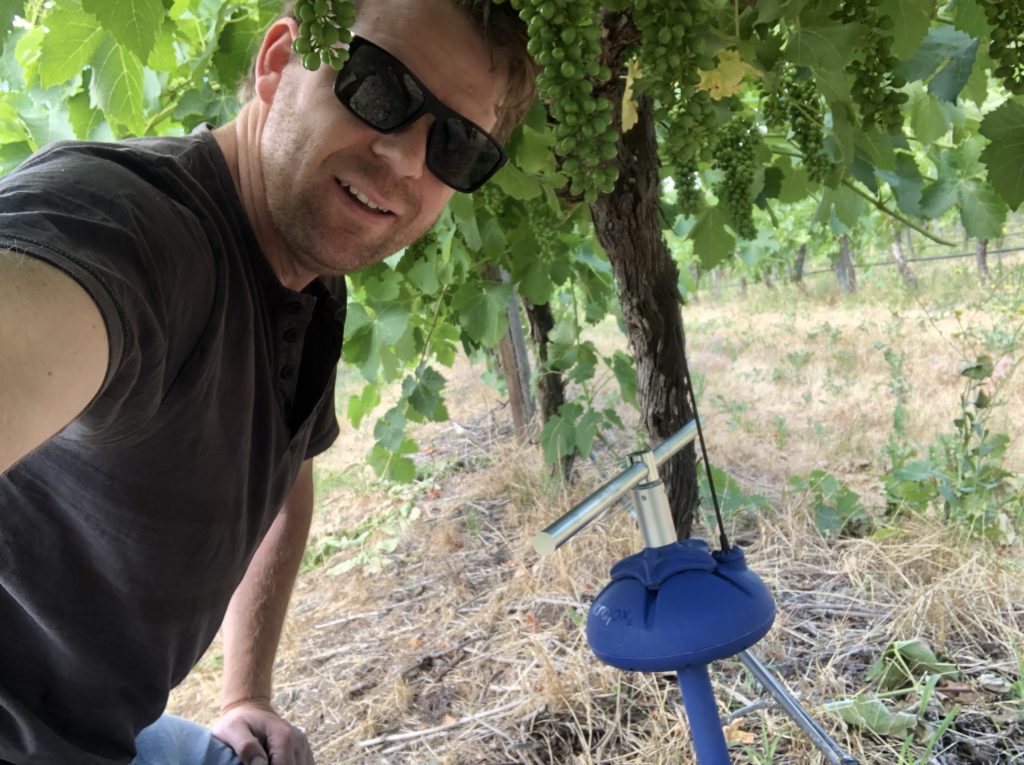
Irrigation.
Zero Carbon,
All aspects of RedHeads Wine’s 500 tonne operation site-build were considered with advice from the Environmental Protection Agency. It allowed them to re-think their processes, and tailor their site to allow for new innovations. “It would have been easier just to replicate other wineries and carry on the way things are ‘usually’ done'” says Alex, “but our goal is to make remarkable flavour-packed vegan wines using 100% sustainable energy, in a process which is carbon-neutral,”
Rainwater – a precious resource in the Barossa Valley – is collected and recycled to a 3m deep irrigation lake, then pumped to the vines… a set up which has won RedHeads a Water Management award. LED lighting throughout the plant was obviously the right choice – but Alex is willing to innovate with new chemistry and technology in the winemaking process; by employing natural non-chilling stabilisation processes using Carboxymethyl Cellulose (CMC); enzyme filtration/polishing; specifying larger surface area cooling tanks; concrete tanks whose mass provides much more thermal stability; and increasing building insulation to stabilise temperature. It is after all the cooling plant that uses most energy – so that’s a great place to start looking for savings.
RedHeads Wine’s Solar installation is designed to be scalable, of course, as production increases. And there’s a plan to charge electric site-vehicles; and those belonging to staff members.
What meat does the butcher eat?
I asked Alex which of his wines we should be looking out for. With the RedHeads portfolio currently running at 35 labels – many of which are gold award winners, vintage after vintage – he struggles to flag up any one in particular – but as a piece of general advice he suggests beginning our journey of discovery with any of his Shiraz: “We’re based in Australia, after all.” he says.
I notice that the 1888 Cottage Shiraz is made using grapes grown on RedHeads own vines – perhaps Alex has that one in mind?
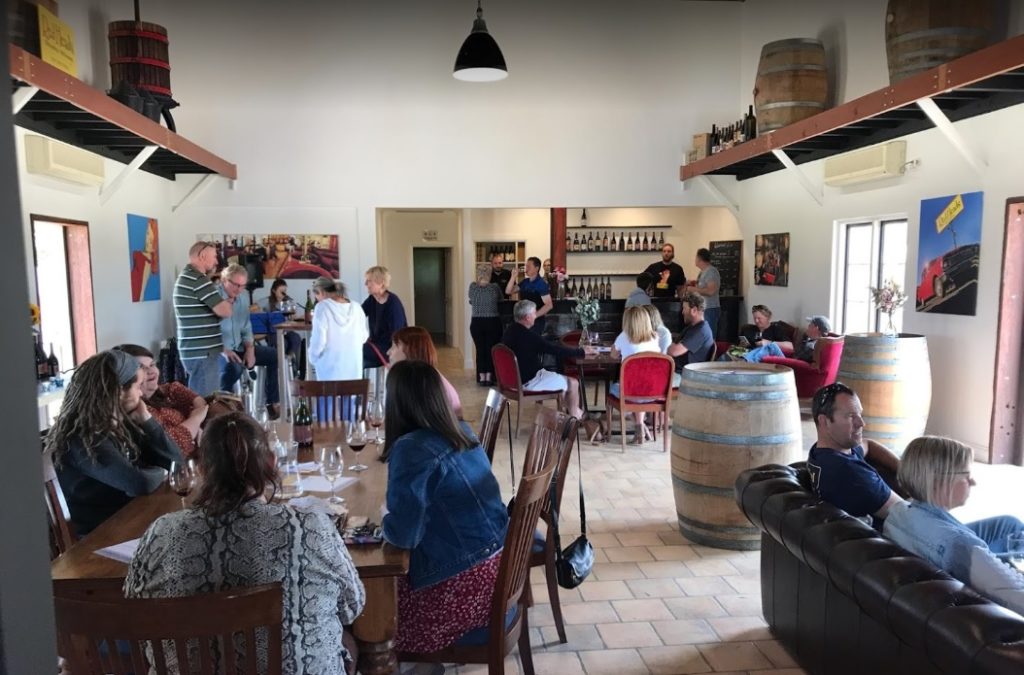
Studio Bar
So if you’re passing through Southern Australia why not visit the Studio Bar, or book a tasting in their historically interesting listed ‘Homestead’ which was built in 1888 – hence the name of their flagship wine.
Or if you live the other side of the world and find yourself browsing the
Laithwaite site – or the shelves of your local wine store – stride over to the ticket marked ‘Australia’ and pick up a RedHead.
